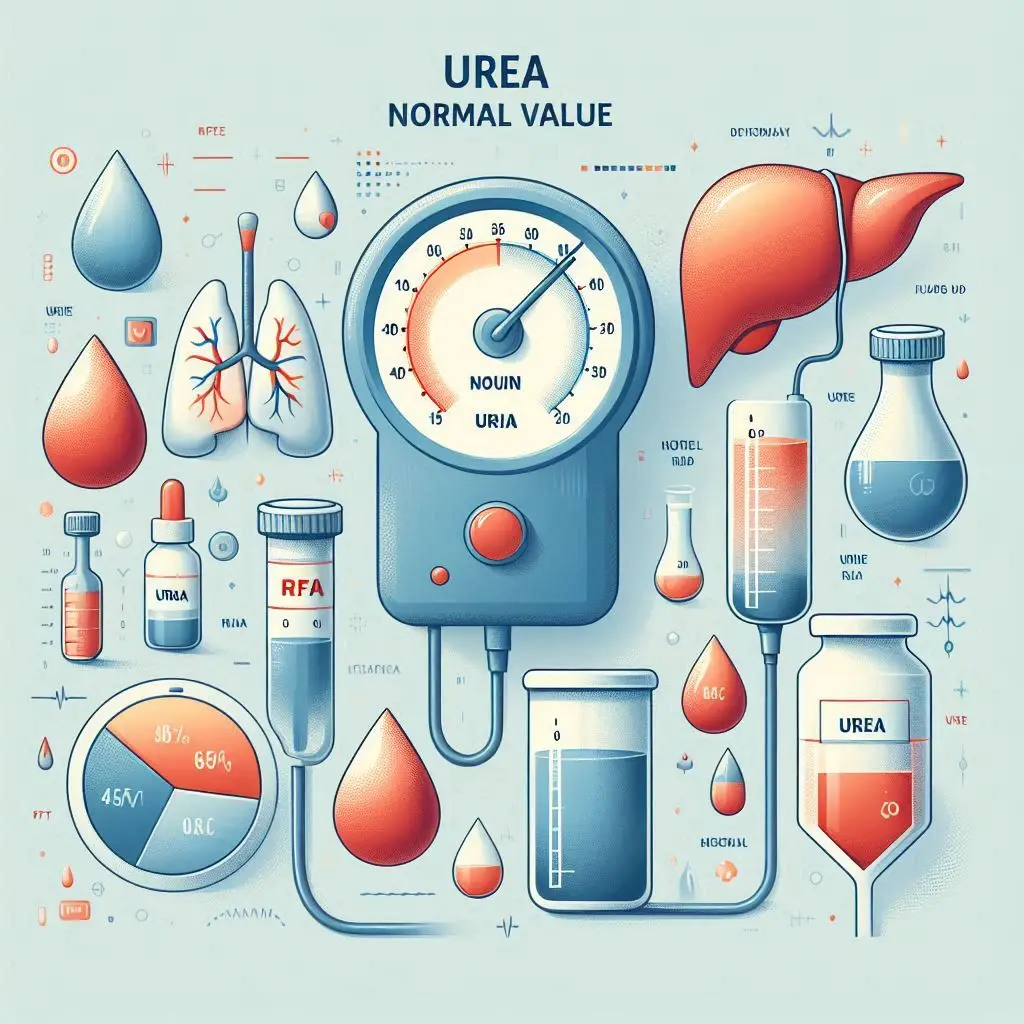
Urea Normal Value: In Blood, Urine, RFT, Male, and Female
Introduction
This article, Urea Normal Value: In Blood, Urine, RFT, Male, and Female, provides a comprehensive understanding of the normal values of urea in different contexts, emphasizing the importance of regular monitoring and accurate interpretation for maintaining optimal health.
Urea is a critical compound in the body's metabolic processes, primarily formed in the liver as a byproduct of protein metabolism. It plays a crucial role in the urea cycle, which helps eliminate excess nitrogen from the body. Measuring urea levels in various bodily fluids, such as blood and urine, provides valuable insights into kidney function, liver health, and overall metabolic state. This article explores the normal values of urea in different contexts, including blood, urine, renal function tests (RFT), and the variations between males and females. Understanding these normal values is essential for diagnosing and managing various health conditions.
Urea Normal Value in Blood
Blood urea nitrogen (BUN) is a standard test used to assess kidney function. Urea in the blood is a marker of how well the kidneys are filtering waste products from the bloodstream. The normal range of blood urea levels can vary based on age, diet, and overall health. Typically, for adults, the normal range is between 7 and 20 mg/dL. However, it's important to note that these values can slightly differ depending on the laboratory and the measurement methods used.
Elevated blood urea levels may indicate kidney dysfunction, dehydration, high protein intake, or conditions like congestive heart failure. Conversely, low urea levels might suggest liver disease, malnutrition, or a low protein diet. Regular monitoring of blood urea levels helps in the early detection of kidney-related issues and guides treatment plans.
Urea Normal Value in Urine
Urea excretion in urine is another vital indicator of kidney function and protein metabolism. The normal range for urea concentration in urine varies, with an average range of 12 to 20 grams per 24 hours in adults. Factors such as diet, hydration status, and overall health can influence these values.
High levels of urea in urine may indicate excessive protein breakdown or a high protein diet, while low levels might be seen in conditions like malnutrition, liver disease, or impaired kidney function. Urine urea measurements are often used in conjunction with blood urea tests to provide a comprehensive view of renal function and metabolic state.
Urea Normal Value in RFT
Renal function tests (RFTs) encompass a series of blood and urine tests to evaluate kidney performance. Among these, urea levels in blood and urine are crucial components. Normal urea values in RFTs align with the standard ranges mentioned earlier: 7-20 mg/dL in blood and 12-20 grams per 24 hours in urine.
RFTs are essential in diagnosing kidney diseases, monitoring chronic kidney conditions, and assessing the effectiveness of treatments. Consistently abnormal urea values in RFTs may prompt further investigations, such as imaging studies or biopsy, to determine the underlying cause and extent of kidney damage.
Urea Normal Value: Male and Female
While the normal ranges for urea levels are generally similar for both males and females, slight variations can occur due to physiological differences. For instance, males may have slightly higher urea levels in blood and urine compared to females, primarily due to differences in muscle mass and protein metabolism. However, these differences are usually minimal and within the established normal ranges.
In clinical practice, it's important to consider these gender-related variations while interpreting urea levels. Both males and females should aim to maintain urea levels within the normal range to ensure optimal kidney function and metabolic health.
Factors Influencing Urea Levels
Several factors can influence urea levels in the body, making it essential to consider these variables when interpreting test results.
1. Diet: Protein intake directly affects urea production, as urea is a byproduct of protein metabolism. High protein diets can increase urea levels, while low protein diets can decrease them.
2. Hydration Status: Dehydration can concentrate urea in the blood, leading to elevated levels, while overhydration can dilute urea, resulting in lower levels.
3. Age: Urea levels can vary with age, with older adults often having higher levels due to decreased kidney function.
4. Medications: Certain medications, such as diuretics and antibiotics, can impact urea levels. It's important to inform healthcare providers of any medications being taken when undergoing urea testing.
5. Liver Function: Since urea is produced in the liver, liver disease or dysfunction can affect urea production and consequently its levels in the blood and urine.
Understanding these influencing factors helps in accurate diagnosis and effective management of health conditions related to abnormal urea levels.
Conclusion
Urea levels in blood and urine serve as vital indicators of kidney function and overall metabolic health. Understanding the normal values of urea in these contexts helps in the early detection and management of various health conditions. Regular monitoring of urea levels through blood and urine tests, as part of renal function tests, is essential for maintaining kidney health. Additionally, recognizing the slight variations in urea levels between males and females, as well as the factors influencing these levels, aids in accurate interpretation and diagnosis. By keeping urea levels within the normal range, individuals can ensure proper kidney function and overall well-being.

